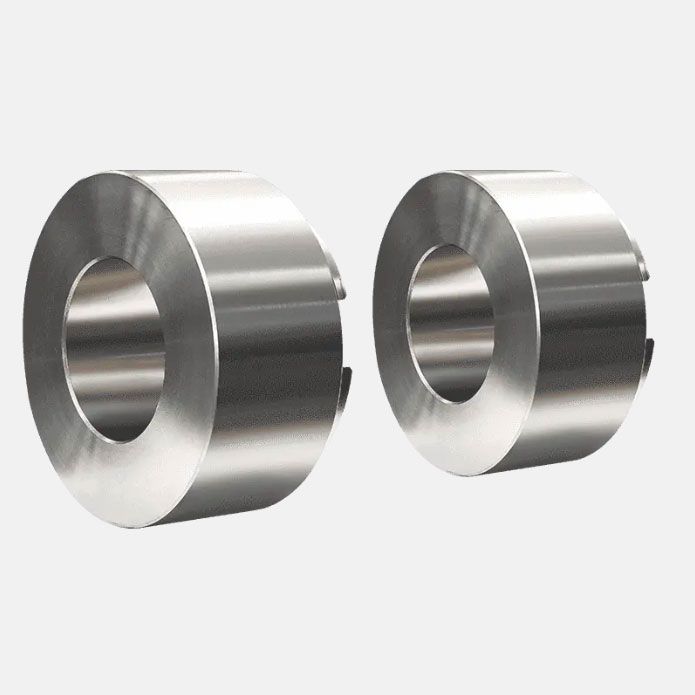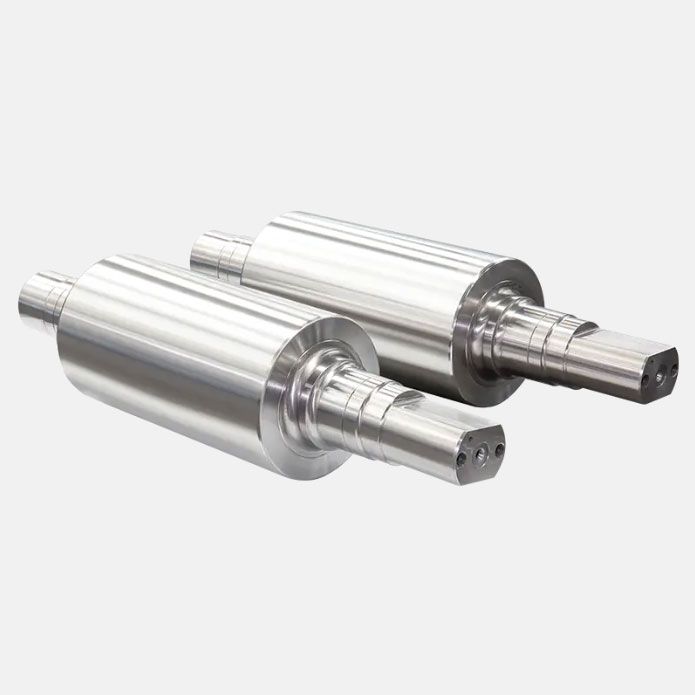Durability of Roll Rings
The durability of roll rings in rolling mill applications is reflected in various fundamental aspects of their performance and service life. These characteristics emphasize the rings’ ability to withstand the demanding conditions of rolling mills, including high temperatures, mechanical stresses, and abrasive environments. Key areas where durability is reflected include:
Wear Resistance
- Extended Service Life: Roll rings are typically made from hard, wear-resistant materials such as tungsten carbide or high-speed steel. This allows them to endure the abrasive effects of rolling for extended periods without significant wear.
- Consistent Performance: High wear resistance ensures that roll rings maintain their shape and dimensions over time, providing consistent rolling performance and product quality.
Thermal Stability
- High Temperature Resistance: Roll rings can withstand the high temperatures encountered during hot rolling processes without losing or compromising their mechanical properties. This thermal stability is critical for maintaining performance under continuous high-temperature operations.
- Resistance to Thermal Cycling: The ability to resist thermal fatigue and cracking from repeated heating and cooling cycles enhances durability in environments with fluctuating temperatures.
Mechanical Strength
- Load-Bearing Capacity: Roll rings are designed to withstand the high mechanical loads and pressures typical in rolling mills. Their high mechanical strength prevents deformation and failure under heavy loads.
- Impact Resistance: Durability also reflects the ability to resist impact stresses during rolling, particularly in applications involving harder materials.
Corrosion and Oxidation Resistance
- Corrosion Resistance: Materials with good corrosion resistance prolong service life and reduce degradation in environments where rings are exposed to moisture, chemicals, or abrasive substances.
- Oxidation Resistance: High oxidation resistance at elevated temperatures helps maintain the integrity and surface quality of the roll rings.
Surface Integrity
- Maintenance of Surface Coating: Durable roll rings maintain a smooth and consistent surface coating, which is critical for producing high-quality rolled products. Preserving surface integrity reduces the need for frequent regrinding or replacement.
- Reduced Surface Cracking: Increased resistance to surface cracking and spalling, common in less durable materials, ensures continuous effectiveness and minimizes downtime for repair or replacement.
Reduced Maintenance and Downtime
- Lower Maintenance Frequency: The durability of roll rings reduces maintenance interventions, lowering downtime and associated costs. This is especially valuable in high-production environments requiring continuous operation.
- Longer Replacement Intervals: Durable roll rings require less frequent replacement, reducing maintenance costs and minimizing interruptions, thereby improving operational efficiency.
Cost Efficiency Over Time
- Lower Total Cost of Ownership: Despite potentially higher initial costs, the longer service life and lower maintenance requirements of durable roll rings result in a lower total cost of ownership over time.
- Improved Productivity: Enhanced durability contributes to more reliable operation, fewer failures, and higher overall productivity, yielding better economic results for the rolling mill.
The durability of roll rings in rolling mills is reflected in their wear resistance, thermal stability, mechanical strength, corrosion and oxidation resistance, surface integrity, reduced maintenance requirements, and cost efficiency. These characteristics ensure reliable performance under the demanding conditions of rolling mill operations, enhancing efficiency, product quality, and operational lifespan.
How to Select Roll Rings for Processing Steel Materials
Choosing the right roll rings for steel processing involves considering several key factors to ensure optimal performance, durability, and efficiency in rolling mill applications. A detailed guide to the selection process includes:
Type of Steel:
- Carbon Steel: Suitable for general applications requiring high hardness and wear resistance.
- Alloy Steel: Offers increased strength and toughness, especially for processing high-strength steels.
- High-Speed Steel (HSS): Ideal for high-speed operations requiring high wear and heat resistance.
Alloying Elements:
- Chromium: Improves hardness and corrosion resistance.
- Molybdenum: Enhances high-temperature strength and wear resistance.
- Vanadium: Increases hardness and wear resistance.
Thermal Properties:
- Thermal Conductivity: High thermal conductivity helps distribute heat effectively during hot rolling, preventing overheating and ensuring uniform temperature distribution.
- Thermal Stability: Roll rings must retain mechanical properties at elevated temperatures to resist thermal fatigue and maintain performance.
Wear Resistance:
- Surface Hardness: Roll rings must have high surface hardness to withstand wear from continuous contact with steel materials.
- Material Durability: Hard materials resist impacts and mechanical stresses, reducing the risk of surface damage and failure.
Dimensional Accuracy:
- Precision Manufacturing: Ensure roll rings are produced to precise dimensions and tolerances to achieve consistent product quality and performance.
- Surface Finish: High-quality surface finish aids in producing smooth rolled steel products, minimizing defects and improving surface quality.
Mechanical Strength:
- Load-Bearing Capacity: Roll rings must withstand the mechanical loads and stresses encountered during rolling without deformation or failure.
- Impact Resistance: Rings should resist impact forces, especially in applications involving hard or abrasive steel materials.
Corrosion and Oxidation Resistance:
- Environmental Conditions: In environments with moisture or abrasive substances, roll rings must be resistant to corrosion and oxidation.
Operational Conditions:
- Operating Speed: Roll rings used in high-speed operations must be designed to handle increased stress and heat generated at high speeds.
- Temperature Range: Ensure roll rings perform effectively within the specific temperature range of the rolling process, whether hot or cold rolling.
Maintenance and Longevity:
- Maintenance Requirements: Select roll rings requiring minimal maintenance to reduce downtime and operational costs.
- Replacement Intervals: Consider the expected service life and replacement intervals to ensure continuous and efficient operation.
Customization and Features:
- Special Features: Depending on the rolling mill and steel processing requirements, roll rings may require special coatings or treatments.
- Manufacturer Recommendations: Consult roll ring manufacturers for recommendations based on the specific steel type and operational conditions.
Cost and Budget:
- Cost vs. Performance: Balance the cost of roll rings against their performance and durability. Higher-quality rings may have a higher initial cost but provide better long-term value.
- Budget Constraints: Ensure selected roll rings meet required performance and durability criteria while staying within budget.
Selecting appropriate roll rings for steel processing involves evaluating material composition, thermal properties, wear resistance, dimensional accuracy, mechanical strength, corrosion resistance, and operational conditions. By carefully considering these factors and consulting experts or manufacturers, you can ensure that the chosen roll rings deliver optimal performance, durability, and efficiency in your steel rolling operations.


